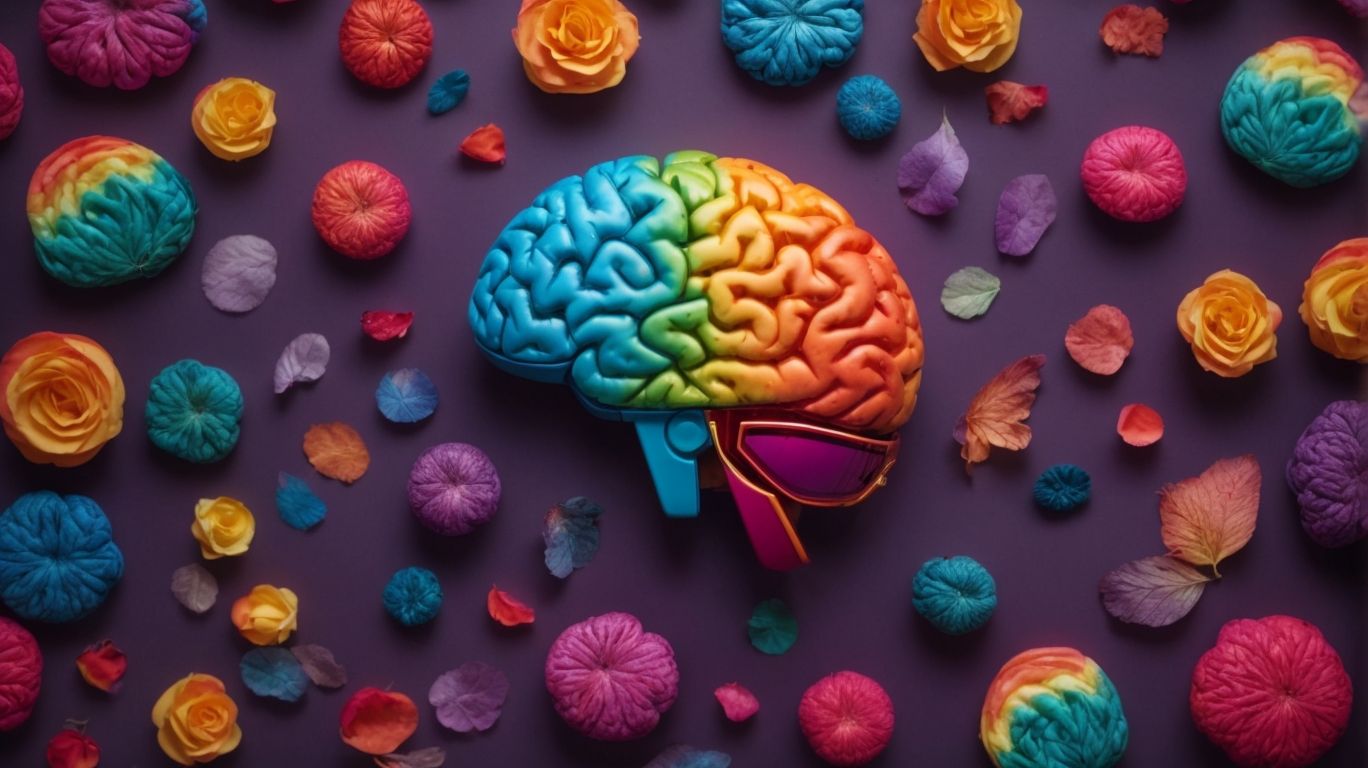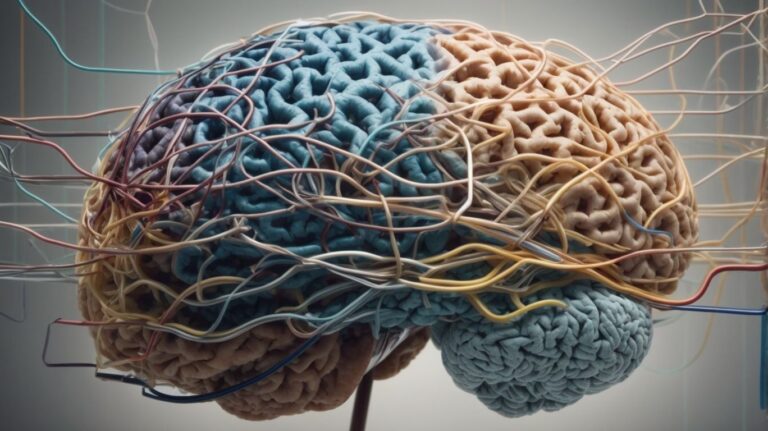Have you ever wondered how people’s behavior is shaped and modified? One key concept in psychology that helps explain this phenomenon is the idea of secondary reinforcement.
In this article, we will delve into the concept of secondary reinforcer, how it differs from primary reinforcement, and the different types of secondary reinforcers. We will also explore how secondary reinforcers are used in behavior modification, the criticisms surrounding their use, and how they can be applied in everyday life, from education to personal development.
So, let’s dive in and uncover the fascinating world of secondary reinforcement in psychology.
Contents
- 1 Key Takeaways:
- 2 What Is a Secondary Reinforcer?
- 3 How Is a Secondary Reinforcer Different from a Primary Reinforcer?
- 4 What Are the Types of Secondary Reinforcers?
- 5 How Are Secondary Reinforcers Used in Behavior Modification?
- 6 What Are the Criticisms of Using Secondary Reinforcers?
- 7 How Can Secondary Reinforcers Be Used in Everyday Life?
- 8 Frequently Asked Questions
- 8.1 What is the concept of secondary reinforcer in psychology?
- 8.2 How is a secondary reinforcer different from a primary reinforcer?
- 8.3 What are some examples of secondary reinforcers?
- 8.4 What is the role of secondary reinforcers in operant conditioning?
- 8.5 How do secondary reinforcers impact behavior?
- 8.6 Can secondary reinforcers lose their effectiveness?
Key Takeaways:
What Is a Secondary Reinforcer?
A secondary reinforcer, also known as a conditioned reinforcer, is a stimulus that becomes reinforcing after being paired with a primary reinforcer.
Conditioning association occurs when the secondary reinforcer gains its reinforcing properties through repeated pairing with a primary reinforcer.
Organisms play a pivotal role in this process, as they learn to associate the secondary reinforcers with the satisfaction of their needs and desires, thereby establishing the reinforcing power of the secondary stimulus.
Examples of secondary reinforcers include verbal praise, money, and tokens in token economy systems, all of which acquire their reinforcing properties through their association with primary reinforcers such as food or other basic needs.
How Is a Secondary Reinforcer Different from a Primary Reinforcer?
While a primary reinforcer is inherently rewarding, such as food or water, a secondary reinforcer gains its reinforcing properties through association with a primary reinforcer.
Primary reinforcers are basic biological needs or desires that fulfill an intrinsic human requirement for survival or satisfaction. Secondary reinforcers, on the other hand, are learned associations that acquire their reinforcing value over time.
For example, in the case of a primary reinforcer, an individual eating a delicious meal is directly rewarded by the taste and fulfillment of hunger. In contrast, a secondary reinforcer like money becomes reinforcing through its association with the ability to obtain primary reinforcers such as food, shelter, or leisure.
The underlying principle of reinforcement is to increase the likelihood of a behavior by associating it with a reward, whether primary or secondary. This process involves strengthening the connection between the behavior and its consequences, leading to its repetition in the future.
What Are the Types of Secondary Reinforcers?
Secondary reinforcers encompass various types, including social reinforcers, token reinforcers, and activity reinforcers, each playing a distinct role in behavioral reinforcement.
Social Reinforcers
Social reinforcers involve the use of social interactions and approval as reinforcing elements in shaping and maintaining desired behaviors.
These types of reinforcers play a significant role in the process of conditioning individuals to exhibit certain behaviors. People are inherently social beings, and social approval serves as a powerful motivator.
For example, in a classroom setting, when a student receives praise or recognition from their peers for answering a question correctly, it serves as a social reinforcer that encourages the student to continue participating actively in class discussions.
Token Reinforcers
Token reinforcers are symbols or tokens that can be exchanged for primary or secondary reinforcers, often implemented in behavior modification programs and teaching machines.
Token reinforcers are essential components of operant conditioning, a concept developed by behaviorist B.F. Skinner. They play a crucial role in shaping behavior by associating specific actions with desirable outcomes.
In teaching machines, which Skinner pioneered, token reinforcers are used to facilitate learning by providing immediate rewards for correct responses. Often, these token reinforcers take the form of points, stickers, or tokens, establishing a clear link between desired behavior and the subsequent reward. This linking enhances the likelihood of the behavior being repeated, ultimately shaping and reinforcing positive behaviors.
Activity Reinforcers
Activity reinforcers involve the use of enjoyable or preferred activities as a form of reinforcement in facilitating learning and shaping behaviors.
Such reinforcers can be powerful tools in behavior modification and are often used in educational and therapeutic settings.
For example, in a classroom, a teacher may incorporate the use of movement breaks as a reinforcer for students who have completed their tasks. Similarly, in a therapeutic setting, a child may engage in a preferred activity, such as playing with sensory toys, as a reward for completing a challenging task.
The positive impact of activity reinforcers on learning and motivation is widely recognized, as they tap into individuals’ intrinsic desires and interests.
How Are Secondary Reinforcers Used in Behavior Modification?
Secondary reinforcers are integral to behavior modification, facilitating processes such as shaping behavior, enhancing motivation, and reducing undesirable behaviors through conditioning and reinforcement.
These reinforcers are derived from primary reinforcers, such as food, water, or other physiological needs, and gain their reinforcing properties through association with these primary reinforcers.
They are not inherently satisfying, but they become reinforcing by being paired with primary reinforcers over time. In behavior modification, secondary reinforcers can be used to shape complex behaviors by providing immediate rewards in the form of tokens, points, or praise, which are later exchanged for primary reinforcers.
They play a crucial role in motivation enhancement by linking desired behaviors with meaningful rewards, thus making the behavior more appealing and likely to be repeated. Secondary reinforcers can help address undesirable behaviors by using them as deterrents or rewards for alternative desirable behaviors.
Hence, understanding the significance of secondary reinforcers is essential in designing effective behavior modification techniques and interventions.
Shaping Behavior
Shaping involves reinforcing successive approximations of a desired behavior, a concept pioneered by Pavlov and further developed by behavioral psychologists such as B. F. Skinner.
Pavlov’s work with classical conditioning demonstrated how animals could be trained to respond to a neutral stimulus through association with a unconditioned stimulus, shaping their behavior over time.
Skinner, on the other hand, introduced the idea of operant conditioning, where behaviors were shaped through reinforcement, such as positive reinforcement or negative reinforcement, to increase the likelihood of a specific behavior occurring. An example of shaping through reinforcement can be seen in training a dog to sit by rewarding small movements towards the desired behavior, gradually shaping it into the final action.
Increasing Motivation
Secondary reinforcers play a crucial role in increasing motivation, with positive reinforcement and negative reinforcement being key mechanisms for modifying and sustaining motivated behaviors.
Positive reinforcement involves the addition of a favorable stimulus to strengthen a desired behavior. Negative reinforcement, on the other hand, entails the removal of an aversive stimulus to achieve the same effect. These processes contribute to shaping behavior patterns and achieving desired outcomes.
Secondary reinforcers, such as praise, recognition, or monetary rewards, play a crucial role in maintaining and strengthening the effects of both positive and negative reinforcement. They have a significant impact on an individual’s motivation and behavior, making them essential tools in behavior modification.
Decreasing Undesirable Behavior
Secondary reinforcers are employed in behavior modification to decrease undesirable behaviors through methods such as punishment, conditioning, and the manipulation of reflex responses.
When implementing secondary reinforcers, it is essential to consider the appropriate timing and consistency. Utilizing punishment as a secondary reinforcer involves the deliberate application of an aversive stimulus to decrease the likelihood of the undesired behavior.
On the other hand, conditioning techniques focus on pairing the secondary reinforcer with the desired behavior to strengthen its occurrence. This process often involves establishing associations between the reinforcer and the behavior through repeated exposure.
Manipulating reflex responses through secondary reinforcement techniques can effectively address unwanted behaviors. By altering the individual’s automatic responses to certain stimuli, it is possible to diminish the occurrence of the undesired behavior.
This approach requires thorough understanding of the specific reflexes involved and the application of appropriate secondary reinforcers to modify them.
What Are the Criticisms of Using Secondary Reinforcers?
The use of secondary reinforcers in behavior modification has faced criticism related to issues such as limited generalizability and the potential for manipulation in reinforcement techniques.
Secondary reinforcers, such as tokens, symbols, and praise, do not have inherent value but gain their reinforcing properties through association with primary reinforcers.
However, some critics argue that this may restrict the generalizability of learned behaviors to only the specific context in which the secondary reinforcers are used.
Furthermore, there are ethical concerns surrounding the use of these artificial stimuli to manipulate behavior, as it may raise questions about the authenticity and ethical appropriateness of reinforcement methods.
Lack of Generalizability
Critics have raised concerns about the limited generalizability of secondary reinforcers, questioning their effectiveness in producing enduring behavioral changes across diverse contexts and learning situations.
Secondary reinforcers, such as money, grades, and tokens, are derived from their association with primary reinforcers and have been extensively utilized in behavioral interventions and conditioning.
Their applicability beyond the specific settings in which they were established is a subject of debate. The conditions under which secondary reinforcers maintain their reinforcing properties might not always translate to various real-life scenarios, leading to challenges in sustaining behavioral modifications in different social, educational, or occupational environments.
Potential for Manipulation
Critics have highlighted the potential for manipulation in the application of secondary reinforcers, especially concerning the ethical considerations and behavioral control implications proposed by behavioral psychologists like Skinner.
Secondary reinforcers, derived from primary reinforcers, possess the capacity to influence behavior through learned associations.
This introduces concerns about the ethical implications of exerting behavioral control through artificial stimuli, raising questions about individual autonomy and consent.
The work of prominent psychologists, such as Bandura and Watson, has furthered the understanding of how these secondary reinforcers can shape behavior, prompting ongoing discussions within the field on the responsible application of such techniques.
How Can Secondary Reinforcers Be Used in Everyday Life?
Secondary reinforcers find diverse applications in everyday life, including education, the workplace, and personal development, influencing behaviors and motivations in various contexts.
In an educational setting, secondary reinforcers play a pivotal role in shaping students’ learning behaviors.
For instance, praise and recognition by teachers act as secondary reinforcers, motivating students to engage actively in the learning process.
Similarly, in workplaces, bonuses and promotions operate as secondary reinforcers, encouraging employees to strive for higher performance levels.
In personal growth scenarios, self-affirmation and goal-setting act as secondary reinforcers, shaping individuals’ behaviors and cultivating a positive mindset.
In Education
In the realm of education, secondary reinforcers play a pivotal role in shaping learning behaviors, as evidenced by the research of scholars like Margot Gershoff.
Secondary reinforcers, such as praise, rewards, and social approval, serve as essential tools in educational contexts. Numerous studies have indicated that their application can positively impact student motivation and engagement.
When integrated into learning environments, these stimuli can effectively reinforce desired behaviors and academic achievements. Secondary reinforcers have been found to contribute to the establishment of a positive classroom atmosphere, fostering an environment where students feel valued and recognized for their efforts. This, in turn, can lead to improved self-esteem, self-efficacy, and a willingness to actively participate in the learning process.
In the Workplace
The workplace environment often utilizes secondary reinforcers to shape employee behaviors and reinforce desired actions through conditioning association and motivational strategies.
Secondary reinforcers such as praise, recognition, bonuses, and opportunities for advancement are commonly employed to boost employee morale and productivity.
By associating these rewards with exemplary performance or specific behaviors, employers can foster a positive work culture and motivate their staff to consistently exhibit desired actions.
In Personal Development
In personal development contexts, individuals utilize secondary reinforcers to modify behaviors, facilitate learning, and establish connections with unconditioned stimuli (UCS) for personal growth.
Secondary reinforcers play a crucial role in operant conditioning, where desired behaviors are strengthened through the use of positive or negative reinforcements.
By associating secondary reinforcers with pleasurable or rewarding experiences, individuals can effectively shape their own behavior and enhance the learning process. These reinforcers are essential in creating an environment that fosters personal growth, as they help individuals make meaningful connections with external stimuli, providing the foundation for sustained positive development.
Frequently Asked Questions
What is the concept of secondary reinforcer in psychology?
Secondary reinforcer, also known as conditioned reinforcer, is a stimulus that gains its reinforcing properties through its association with a primary reinforcer. It is learned through previous experiences and behaviors, and can increase the likelihood of a desired behavior being repeated.
How is a secondary reinforcer different from a primary reinforcer?
While primary reinforcers are biologically determined, such as food, water, and shelter, secondary reinforcers are acquired through conditioning. In other words, they are not inherently reinforcing, but gain their value through their association with a primary reinforcer.
What are some examples of secondary reinforcers?
Some common examples of secondary reinforcers include money, praise, tokens, and grades. These stimuli are not inherently valuable, but have been associated with primary reinforcers through learning and can motivate behavior.
What is the role of secondary reinforcers in operant conditioning?
In operant conditioning, secondary reinforcers are used to shape and maintain desired behaviors. They can be paired with primary reinforcers to increase the likelihood of a behavior being repeated, and can also be used to gradually phase out the use of primary reinforcers.
How do secondary reinforcers impact behavior?
Secondary reinforcers can have a powerful impact on behavior as they can motivate individuals to engage in certain actions in order to receive the associated primary reinforcer. They can also be used to reinforce behaviors that may not be immediately rewarding, but have a long-term benefit.
Can secondary reinforcers lose their effectiveness?
Yes, just like any form of conditioning, the association between a secondary reinforcer and a primary reinforcer can be weakened or extinguished over time if the primary reinforcer is no longer consistently provided. This can result in a decrease in the desired behavior.



